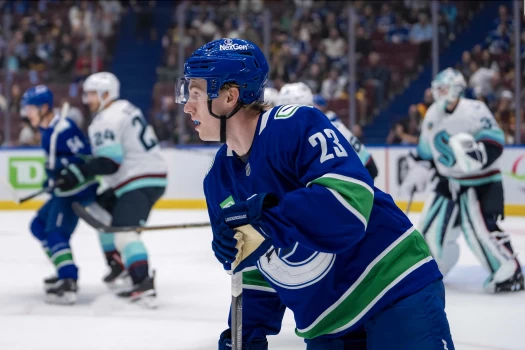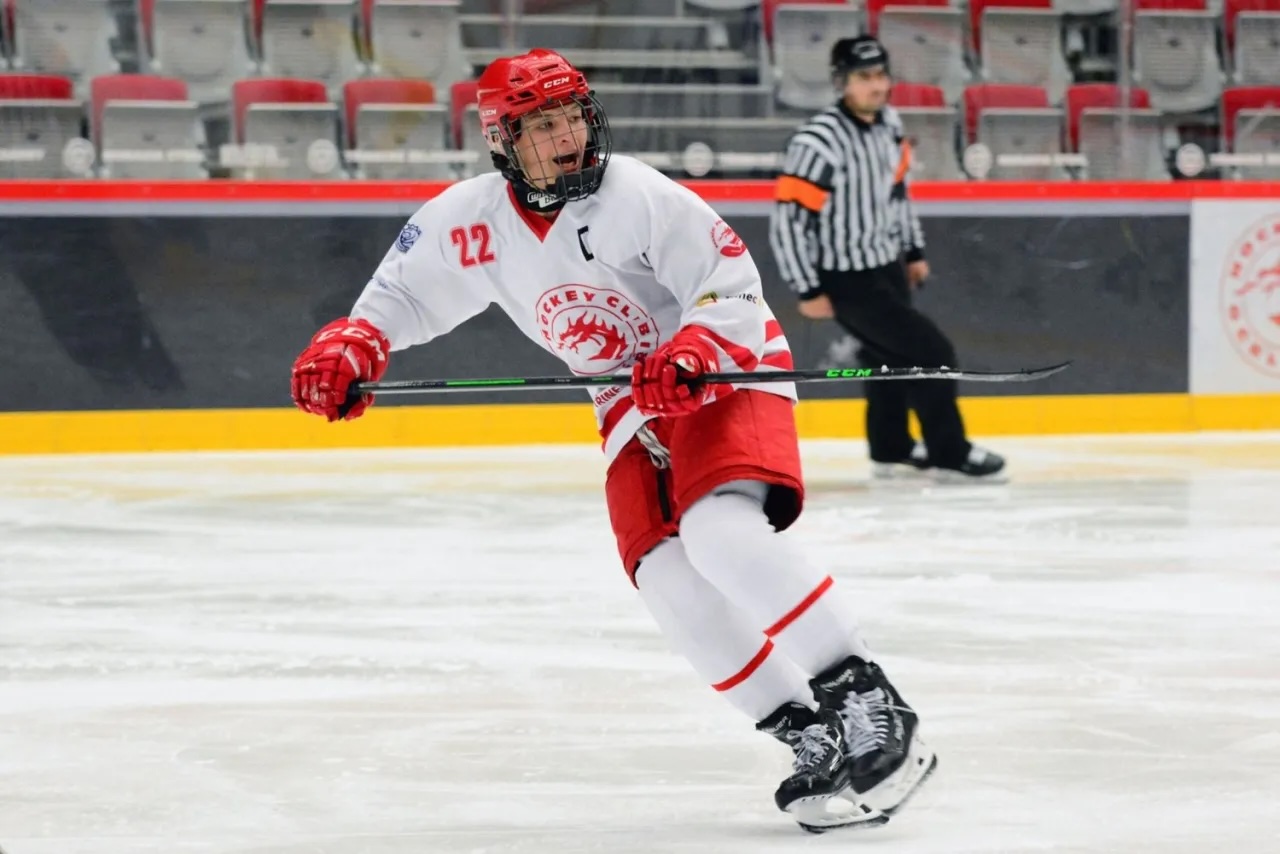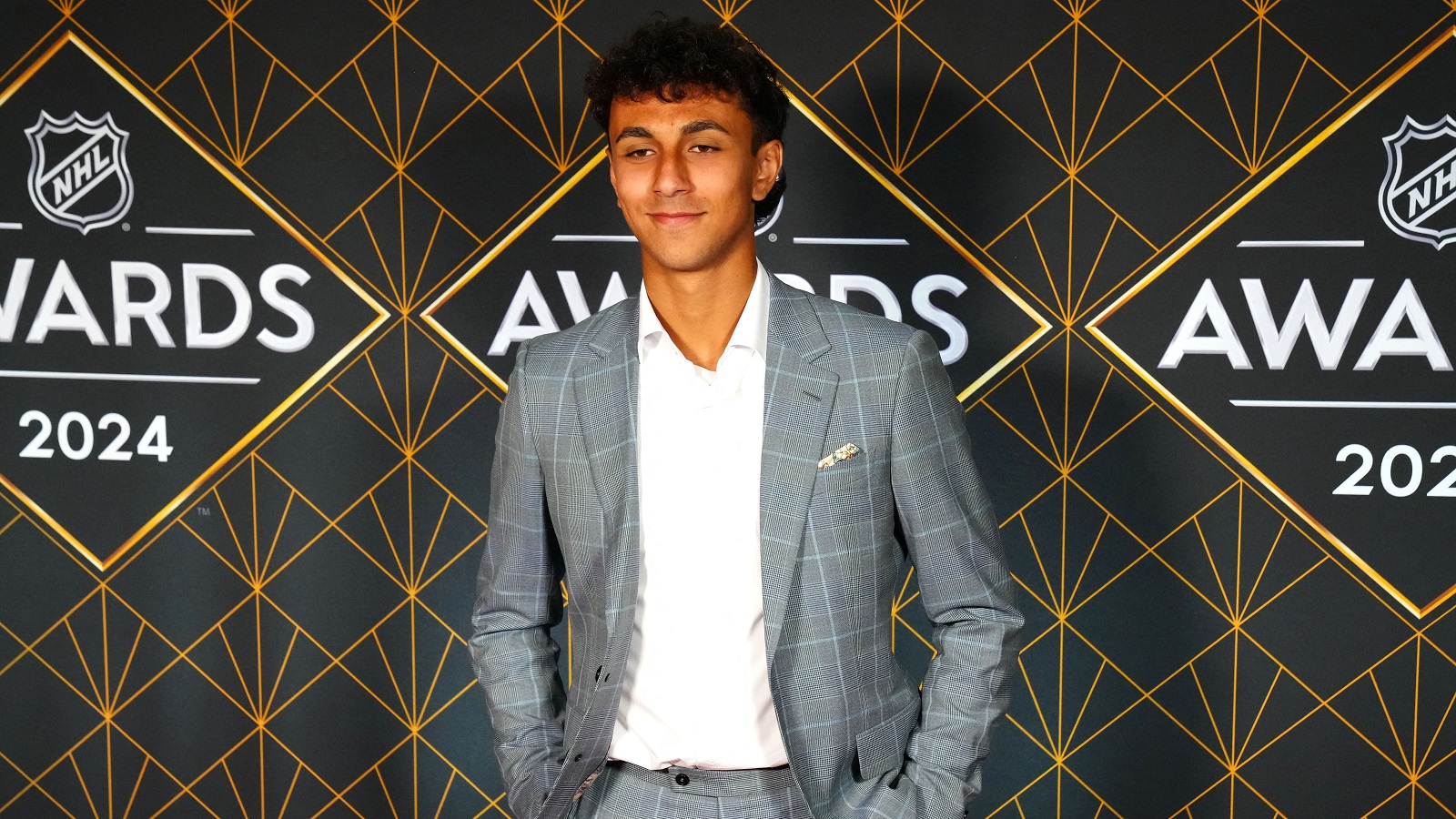AHL Stock Watch: Jonathan Lekkerimäki positioning himself for a call up

The AHL season is just starting, but we're already observing some trends.
A few top prospects have hit the ground running, making the most of their ice time and producing at or above a point-per-game pace. While they may not have all managed to prove their talents to their NHL club during the preseason, their early dominance is positioning them for a call-up in the coming weeks.
Entering their second or third season in the league, some other young players have hit a wall. They played their hearts out for an NHL spot in training camp but instead found themselves right back where they were last year, travelling with their club's affiliate. New players, freshly arrived from junior clubs across the country, now sit next to them on the bus. The battle for ice time and to climb the organizational depth chart continues for them.
Stock Rising 📈
Jonathan Lekkerimäki, RW, Abbotsford Canucks (Vancouver Canucks)
In the first frame of the Abbotsford Canucks matchup against the San Diego Gulls, Jonathan Lekkerimäki rushed in on the forecheck. He went shoulder to shoulder with an opponent, bounced off of him, and then slid on the ice. He delayed the opposing breakout enough for Aatu Räty to catch up and hammer the opponent off the puck. Räty then started a tic-tac-toe play, which Lekkerimäki immediately finished by skating to the far-post.
The Canucks’ 15th overall pick is playing with renewed energy in this start to the season. Skating in a deep, explosive posture, he's jumping in every battle, making cycle plays, and closing on opponents faster defensively. The extra dose of pace and urgency is transforming his game and putting him on a faster NHL track.
Lekkerimäki already has seven points in seven games. His release and puck distribution ability could help the Canucks’ offence right away, but as he's developing well with Abborsford, maybe the best development path for him would be to remain with the club for a few months before making the NHL jump.
Ivan Miroshnichenko, LW, Hershey Bears (Washington Capitals)
Ivan Miroshnichenko is currently sitting in the AHL’s top-ten scoring leaderboard with eleven points in as many games, his play in the bumper spot on the power play has fuelled that production. He’s even better than last season at shifting between defenders to create space, get his stick free, and fire off passes.
That’s a role he could fill at the NHL level, too. He has the size to push back against opponents, the ability to get open at the right time, and, most importantly, a heavy release. Miroshnichenko can hammer any type of pass or rebound flying in his direction with precision.
There’s an underdeveloped power-forward element in Miroshnichenko’s game. He drives up and down the ice, chips the puck past opponents, and chases it down on the forecheck. If the winger can lean into those abilities even more—adding physicality and playmaking while perfecting his net-front play—he could become a bruiser and power-play specialist in a middle-six role for the Capitals.
Luca Cagnoni, LD, San Jose Barracuda (San Jose Sharks)
It was fair to wonder if Luca Cagnoni’s high-level WHL production would translate to professional hockey, considering his smaller stature and unique playstyle. The answer is already a resounding yes. Cagnoni has stepped into an offensive quarterback role with the San Jose Barracuda and scored at a point-per-game rate.
He has mostly created scoring chances with his shot, by aiming for deflections and firing off passes after activating down to the slot. His ability to read and time himself with the play has translated perfectly to the AHL. He’s exposing holes in the opposition’s coverage, supporting teammates, and complementing their plays. But what's even more exciting is that there’s an extra level to his offensive game that he hasn’t shown yet. Capable of dangling and deceiving defenders, he could transform into one of the better playmakers in the AHL as the season goes on.
The Sharks will need a highly talented offensive defenceman to run their first powerplay one day. If Cagnoni continues to expand his offensive skills, he could become that go-to quarterback.
The defensive game will always be more challenging for him, but so far, he has positioned well in the defensive zone and made good use of his high-end skating to close gaps.
Stock Steady ↔️
Adam Engström, LD, Laval Rocket (Montréal Canadiens)
Over the past two seasons, the excitement around Adam Engström’s potential grew significantly. He lined up two solid campaigns in the SHL, showing a high-level skating ability, and an ability to carry the puck across zones. But an uneventful preseason and the emergence of Lane Hutson had him fall in the background in the early season.
Quietly in the AHL, however, Engström has been pulling off many of the same plays that made his success in the SHL. He’s using his stature and mobility to defend the front of the net, smoothly catching and redistributing pucks, and showing an uncommon poise against incoming defenders. An efficient mover, he looks like he’s barely expanding energy floating up and down the ice and walking the blue line.
The tactical side of his game still needs work. Engström has to learn the right timing for his one-on-one feints and to defend without the puck more consistently, but he remains a potential NHL candidate. A few months in the AHL and he could position himself for a call up to Montreal.
Stock Falling 📉
Fabian Lysell, RW, Providence Bruins (Boston Bruins)
This was supposed to be the season where Fabian Lysell made the jump to the NHL. It was the next logical step for him, after he played two seasons with the Providence Bruins, ramped up his production with the team, and honed his physical play. But he didn't look fully ready in preseason and his two points in seven AHL games to open the season won't convince the Bruins to call him up anytime soon.
A puck-carrying, shifty forward, Lysell can play keep away, drag defenders out of position, and create openings for teammates. But occasionally, his best quality can also become weaknesses, when he holds the puck too long or throws it right back to the opposition.
This shift in overtime shows the best of Lysell and what he has to work on. He dances around the opposition with the puck on his stick and creates multiple zone entries, but he also misses some occasions to cut inside the defensive formation and to get to the net. Despite all his efforts, he doesn’t end up creating a high-value scoring chance. Exhausted, he leaves the ice with eight seconds left.
To succeed, Lysell will need to integrate a top-six role in the Bruins’ lineup. He has the talent to fill such a spot, but his habits, decisions and his ability to generate chances from middle-attacks will all have to improve.


